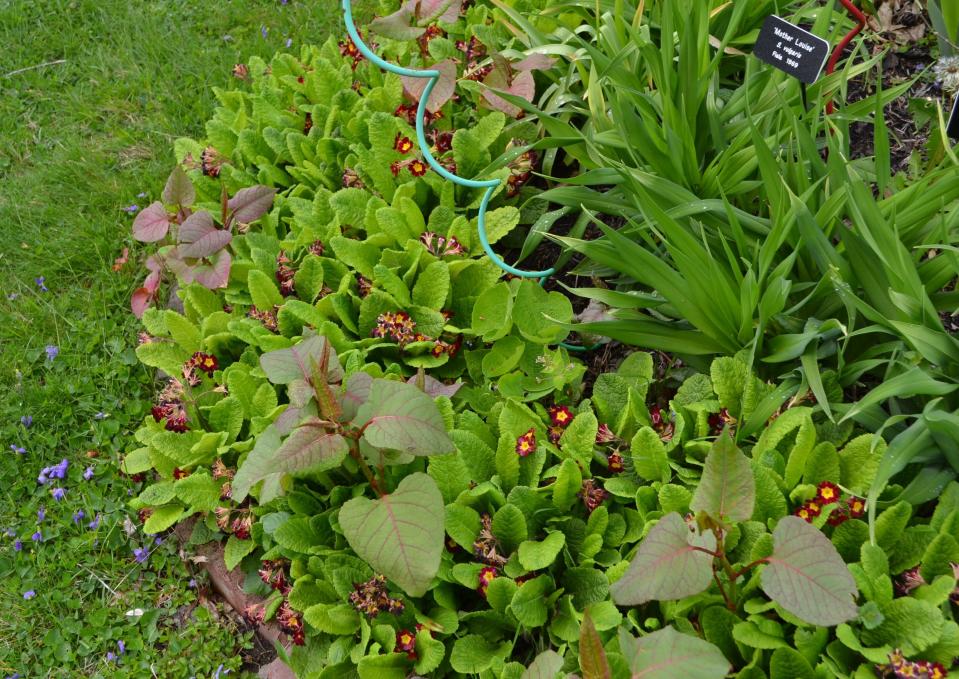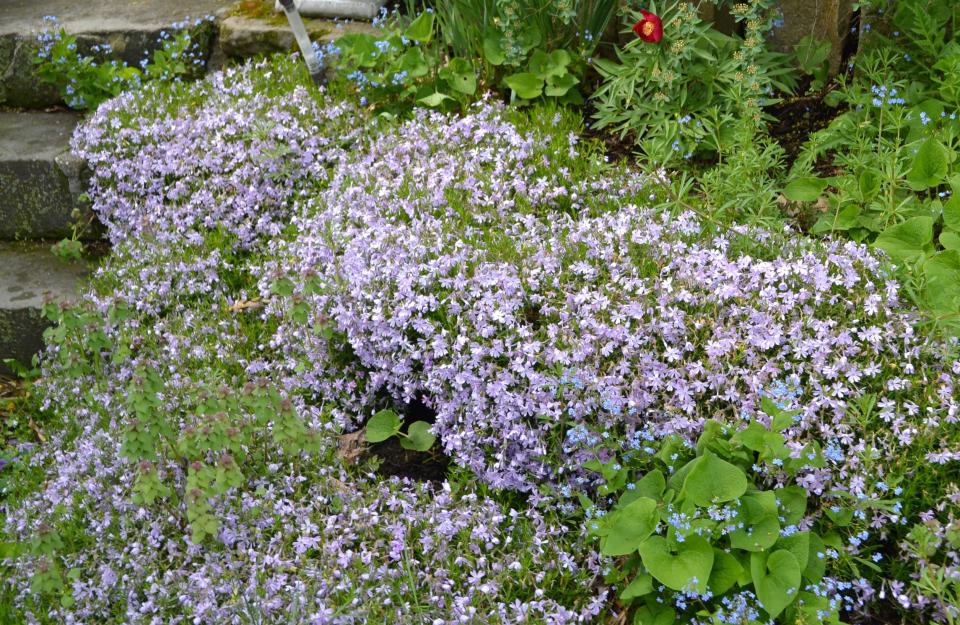A Stroll Through the Garden: Ground covers and their benefits
I was at the pool last week and talked to a lady whom I had met not that long ago. Seems that she has been trying to have a clean garden. Her effort and her husband’s efforts have not been enough to keep her garden clear of weeds.
I don’t know about anyone else, but I’m not a big fan of weeding. My mother, on the other hand, found that weeding was a therapeutic garden job after a day at work. After an hour or two in the garden, I would always see a smile on her face. When I realized that she had a rough day at work, came home and felt better a couple of hours later, it might be a consideration for all of us who have a rough day by visualizing maybe pulling something different out of the ground. Since it's a new year, my hope is that I might give you some food for thought for this coming year that you can implement to help you feel better about your garden.

Weeding, I feel confident in saying, is one of the most disliked of all gardening jobs and in most gardens is tackled badly, whether in a vegetable garden or a landscape border. Normally little is done to prevent the arrival of weeds. When they become unsightly, we spend hours hoeing, forking out and hand pulling. By the time we have completed the last bed, we then discover that the first bed is again in need of help. This has become an unending cycle for most of us. Being a landscape designer, I would design a beautiful series of borders for a homeowner and most of the time I would go back a few years later and discover the bed was overrun by weeds. This generally would break my heart, and I would offer our weeding service and then a way of protecting their investment in the future. This may seem a little self-serving to weed a bed that was clean a few years before and was beautiful, but this was usually after I had given them some advice about the different forms of weed protection. After all, my reputation was also at stake when people would go to a particular home and see weeds in one of my designs.
Just as you may imagine, there are many ways to solve the weed problem. Hoeing a garden has been a traditional method of getting rid of weeds. My sister married a tomato farmer in Harrow, Ontario, and she did her share of hoeing. What I found fascinating is her special hoe. She told me that her teams could go through a field fairly quickly. I have seen the Dutch hoe, draw hoe, scuffle hoe and an onion hoe. Chemicals can also be used to kill weeds, to which I normally take exception. Weed control mulch like black polyethylene, woven polypropylene, cardboard and old carpet have been used for regular mulches. I usually applied a variety of wood mulches like double ground hardwood mulch, stump grindings, cedar chip mulch, pine mulch and others. Lately I have liked pea gravel on a bed, but you can also find white gravel chips, bluestone gravel, lava rock and much more. All of these methods have their own benefits and limitations.

My favorite method of controlling weeds is what you can call a ground cover or cover crop. There are two different ideas in these types of plants. Cover crops are being used to a greater extent in a home garden recently. My opinion is controlling weeds in a landscape border or a flower garden is with a ground cover. When I designed my borders or flower gardens, I would select perennials that would grow strong fast or I would allow the weaker perennials to get established in the first year and then bring in the ground cover. Some of the ground covers I used were very specific for the applications I designed them to be. Most ground covers are low growing and most have an appealing flower. In my designs I would not cover the beds entirely with the ground cover but allow for some space, which may reach the point of overcrowding too quickly. I would have tall perennials planted and then the ground cover. Most of the time basic spacing ideas were held between the perennials.

There are many good groundcover alternatives to a traditional lawn. For instance, I have a low-growing bamboo that provides a lawn-like quality that works in the dense shade. No grass survived this dense shade prior to this bamboo. An uninteresting corner in the spring can be an exciting addition to the landscape with myrtle in bloom. I have edged walks with low-growing perennials, avoiding normal walk edging. Basically, you reduce maintenance in the garden by having a good stand of a ground cover blocking the sun out and preventing weed germination. Be aware some groundcovers may be considered bullies in your gardens, which is a good reason to have a designer take a look at what you are trying to do. Some of the common groundcovers are myrtle/vinca, pachysandra, lilyturf, stonecrop, creeping phlox and many more. If you drop me a note, I shall do my best to get you a link to a blog on ground covers.
Hope you have a great stroll through your indoor and outdoor garden this week. If you have any challenges, please let me know and drop me an email at ericlarson546@yahoo.com. I shall do the best I can to help. I shall put a link to my website, ohiohealthyfoodcooperative.org, soon. Thank you for participating in our column.

Eric Larson of Jeromesville is a veteran landscaper and gardening enthusiast and a founding board member of the Ohio Chapter of Association of Professional Landscape Designers.
This article originally appeared on Mansfield News Journal: Use ground cover to control weeds in your garden beds

